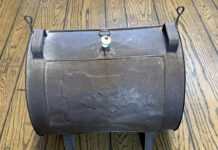Are you tired of always, every year fussing over if it is too late to plant? I am, but I guess that is part of farming in northern Ohio.
Below I will explain why I think it is too late to plant corn and soybeans to be harvested for grain but not too late to plant corn for silage.
Yield depression. Yield depression due to late planting of course depends on the weather from now until harvest.
When, how much and how often will it rain? When will it frost?
Ironically, if you are closer to the lake you can plant later because the first frost will come up to 10 days later, depending on distance from the lake.
We estimate the least yield depression with late planting for corn silage, intermediate depression for soybeans and most for corn for grain.
Maximum yields for corn and soybeans for grain occur when planted the first week in May. Corn silage yields the most, however, when planted in mid-May, with about a ton per week decline after that.
In my calculations below, I used yields for planting now of 12.5 tons/acre for corn silage; 30 bushels per acre for soybeans and 75 bushels per acre for corn for grain.
Money back? Will you get your money back planting now?
My interpretation of OSU Extension budgets indicates a return to planting corn silage now, but likely no return to planting corn or soybeans for grain.
The prices used in the budgets are $23 per ton and $57 per ton for corn silage, $5.15 per bushel for beans and $2.40 per bushel for corn.
I figured a payment of $40 per acre and $115 per acre from crop insurance for prevented planting.
Fixed costs. I didn’t include fixed costs in my calculation, as you won’t spend any more or less money in owning or controlling land, machinery, buildings or insurance whether you plant any more.
I also didn’t figure in your government payments because you will get the government payment whether you plant extra acres or not and either way it won’t affect your crop base acres or yield.
Of course, included in my calculations are variable costs – those extra costs you will incur if you plant, such as seed, herbicides, fertilizer, fuel, oil, grease, etc.
The only equipment charge I made is for the additional expense to run the equipment, such as additional repairs, grease, oil and fuel. I assumed the owner/operator would be providing the labor, so did not include a labor charge.
Corn silage. The OSU budgets value corn silage at $23 per ton and use a low yield for corn silage of 12.5 tons per acre, which I think is surely obtainable with a late June planting.
Normand St. Pierre recently valued corn silage at $57 per ton for milk production by pricing the nutrients in corn silage at the market price of other feeds.
Using the $23-per-ton price with the lowest crop insurance payment, you will pay yourself $22 per hour for planting and harvesting corn silage or $121 per acre.
With higher crop insurance payment your returns diminish to $8.50 per hour or $47 per acre.
If we value silage at $57 per ton, your returns increase to $110 per hour or $600 per acre with the low crop insurance payment.
Returns are $95 per hour or $520 per acre with the higher crop insurance payment.
No matter what the assumptions, dairymen can still afford to plant corn to be harvested as silage.
Soybean planting. If we assume 30 bushel per acre with the low crop insurance payment, you will pay yourself $5.75 per hour or $15 per acre for planting and harvesting soybeans.
With the higher insurance payment you will be losing $22.75 per hour or $59 per acre.
Corn for grain. With a 75-bushel-per-acre corn yield and the lower crop insurance payment, you will just break even with no gain or loss when considering only out-of-pocket costs.
But, with the higher crop insurance payment you will be paying $31.75 per hour or $115 per acre (the amount of the insurance payment) for the privilege of riding the tractor and combine.
Your calculations. I used crop insurance payments of $40 and $115 in my calculations. Your payments will differ so use your figures.
Also, your out-of-pocket expenses will differ from the OSU Extension budgets figures I used.
When you calculate your expenses don’t forget fuel and electricity for drying corn. I used 14 cents per bushel, which is likely too low for late-planted corn.
For trucking, I figured you owned your own truck so used 4 cents per bushel for fuel only. If you hire the trucking done, your trucking expense will be higher.
Finally, even though your repair expenses will likely be higher than those I used for new equipment, your additional repair expense is difficult to estimate. The OSU figures I used were $11 per acre for corn silage, $13 per acre for soybeans and $11 per acre for corn for grain.
Estimates. To determine your return to planting now, first multiply your projected yield times your projected price to get return. Then subtract your costs.
Finally, subtract the insurance payment you would get for prevented planting.
If you wish to calculate your likely return per hour, divide the hours per acre you will spend into the above return per acre. OSU figures 5.5 hours per acre for corn silage, 2.6 hours per acre for soybeans and 3.6 hours for corn for grain, but that is with new equipment sized for 1,000 acres.
(The author, an OSU Extension ag agent in Lorain County, is a member of OSU’s Dairy Excel team. Questions or comments can be sent in care of Farm and Dairy, P.O. Box 38, Salem, OH 44460.)












